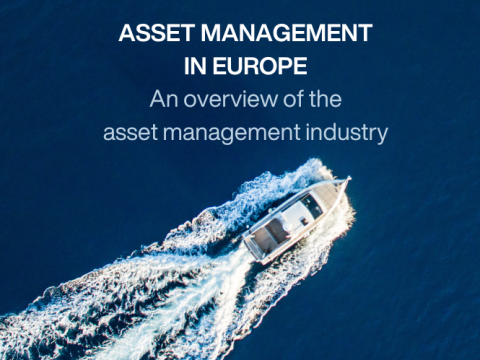New report shows benefits of asset managers to investors and the European economy
EFAMA published today the 15th edition of its Asset Management Report. The report provides an in-depth analysis of recent trends in the industry.
Key findings include:
- Assets under management (AuM) – Assets under management (AuM) in Europe declined by 13.8% in 2022 to EUR 27.8 trillion. The decline was mainly due to the downturn in the bond and stock markets. AuM are expected to increase to EUR 29 trillion in 2023 thanks to the stronger capital markets environment.
- AuM across countries – Almost 85% of the asset management activity takes place in six countries: the United Kingdom, France, Switzerland, Germany, the Netherlands and Italy.
- Investment funds and discretionary mandates – At the end of 2022, investment funds and discretionary mandates assets managed in Europe totalled EUR 15.7 trillion and EUR 12.1 trillion, respectively, or 56.5% and 43.5% of total AuM.
- Financing the economy – Euro-area investment funds held EUR 2,626 billion of debt securities and EUR 1,011 billion of listed shares issued in the euro area at the end of 2022. These amounts confirm that asset managers contribute significantly to funding the European economy.
- Industry clients – Retail clients increased their share in total AuM from 26% in 2020 to 30%, thanks to their strong demand for investment funds in 2021 and 2022. Pension funds and insurance companies followed in order of importance with a share of 24% and 22%, respectively. AuM managed for domestic clients represented 68% at the end of 2022, compared to 72% in 2018.
- Asset allocation – The share of bonds steadily declined in total AuM from 40% in 2018 to 35% in 2022. This happened in parallel with an increase in the share of equity from 28% in 2018 to 32% in 2022. The other categories of assets managed by asset managers are less liquid, alternative assets (26%) and cash and mony market instruments (7%).
Thanks to contributions from McKinsey, Cerulli and EFAMA corporate members, the report also addresses the following three questions:
- What are the advantages and risks of generative artificial intelligence for asset managers?
- Why will investors’ allocation to private assets increase in the future?
- How can asset managers challenge the business models of investee companies?
EFAMA’s Director General, Tanguy van de Werve commented:
“Given their long-term investment horizon, institutional investors are ideally placed to finance the sustainability transition. By entrusting their assets with investment managers, they can benefit from our industry’s fast growing ESG expertise and engagement capabilities.”
EFAMA’s Senior Director, Bernard Delbecque added:
“To remain competitive, asset managers need to adapt their business model to benefit from AI, turn key sustainability challenges into opportunities, and deliver private market products to retail investors. In taking up these challenges, they will take an even greater role in serving the need of investors, funding European companies, and helping the transition to a greener economy.”
- ENDS -
Notes to Editors
Graphs and country-specific data are available for reproduction.
For further information, please contact:
Hayley McEwen
Head of Communications & Membership Development
Tel: +32 2 548 26 52
Email: Hayley.McEwen@efama.org
About the Asset Management Report
The EFAMA Asset Management in Europe report provides a precise picture of the European asset management industry, focusing on the countries where assets are managed. This perspective is distinct from most other EFAMA reports, such as the Fact Book, the monthly Fact Sheets, or the quarterly statistical releases, which analyse trends in the European investment fund market from the standpoint of the countries in which funds are domiciled or owned.
The report is primarily based on data provided by national associations from Austria, Belgium, Bulgaria, Czech Republic, Denmark, France, Germany, Greece, Hungary, Italy, the Netherlands, Poland, Portugal, Romania, Slovenia, Switzerland, Spain, Turkey and the United Kingdom. Additional internal and external data have been used to estimate assets managed in other European countries by the end of 2022.




























